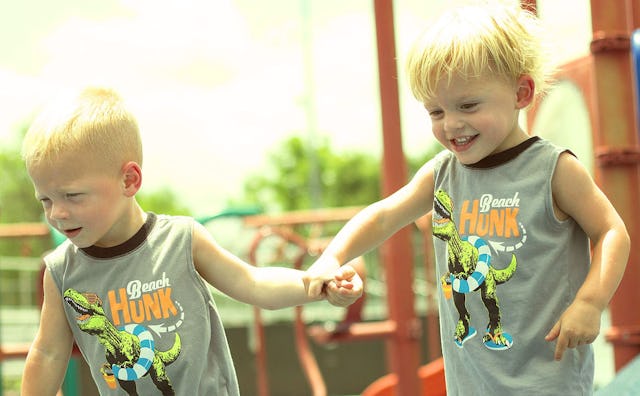When 'Not Fair' Is The Only Option

The stench of a cigarette.
In all fairness, the person doing the smoking appeared to be doing his best to keep the fumes away from the nearby children. He was shuffling along the outer perimeter of the fence, his back turned to the ruckus of kids’ play going on behind him. It’s not like he was standing there, blowing smoke rings directly into my son’s face. But the putrid odor that left me cringing as my son swung awkwardly from one bar to the next was so overpowering that I felt like he might as well have been. As my head began to ache from the fumes, my heart began to ache from what I knew was coming: “It’s not fair.”
Here’s the thing about cigarette smoke: It’s not like a beer can, or chewing tobacco, or even a dirty needle (not that I want those near my kids either). It can’t simply be tossed aside or discarded beyond the reach of children who happen to be in the vicinity. Cigarette smoke travels.
I don’t consider myself a prude, but I do believe that there are rules posted at the playground for a reason. I’ll admit, I’ve broken the one that says “no food or drink on the playground” plenty of times. My kids burn a lot of energy climbing, swinging and running around. They need sustenance.
But when it comes to the “No Smoking” sign on the fence, I just don’t think there’s any grey area there. And there shouldn’t be. Literally. My kids shouldn’t have to pass through a haze of smoke as they run around what is supposed to be a kid-friendly place.
As a parent, I’ve struggled with how to handle these kinds of situations. Pointing out the rules to a smoker seems prudish and out-of-place. Asking him politely to stomp out his cigarette has—in the past—been met with an eye roll and a refusal to do so. I imagine that being snarky would only get me snark in return. And allowing my kids to continue playing in an area where they’re exposed to the dangers of secondhand smoke is not an option.
Typically, the only choice I’m left with is telling my kids we have to leave, and then either taking them home or to a different playground—one that is smoke-free. They tell me it’s not fair, and they’re right: It’s not fair. It’s not fair that my children have to suffer because someone else doesn’t follow the rules. It’s not fair that I have to rearrange my schedule because someone else doesn’t take the dangers of secondhand smoke seriously.
© Courtesy Samantha Wassel
Research has revealed that exposure to secondhand smoke can have long-term and devastating consequences for our children. According to the Centers for Disease Control and Prevention, of the 7,000-plus chemicals present in secondhand smoke, it has been found that hundreds of them are toxic and at least 70 can cause cancer. In addition to cancer, secondhand smoke increases the incidence of chronic, and sometimes deadly, respiratory; cardiovascular; ear, nose and throat; and cognitive problems. Here are some of the most harmful effects of secondhand smoke exposure for children:
1. Asthmatic children who are around secondhand smoke are prone to more severe and frequent attacks, the CDC says.
2. Children who are exposed to secondhand smoke are at an increased risk for lung cancer, ear infections, pneumonia and bronchitis, according to Americans for Nonsmokers’ Rights.
3. Kids who are exposed to secondhand smoke are at a higher risk for cognitive problems, Americans for Nonsmokers’ Rights reports. Secondhand smoke impairs a child’s ability to learn. In fact, more than 21.9 million children are estimated to be at risk of reading deficits because of secondhand smoke.
4. Secondhand smoke can cause coronary heart disease, stroke and heart attack, and nonsmokers who are exposed to it increase their risk of developing heart disease by 25 to 30 percent, the CDC reports.
So, as the stench of cigarette smoke continued to permeate the air around us, I rounded up my boys and told them we had to go.
They looked at me, and I could see the words in their eyes before they even said them, so I said them first:
“I know, boys. It’s not fair.”
In my head, I added, but it’s better than the alternative.
This article was originally published on